Sunil Sharma: In the process of yogic purification we find our true nature
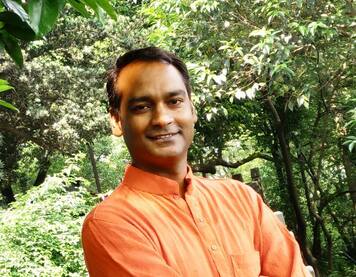
Sunil Sharma is a teacher of yoga, meditation and particularly yoga nidra in Rishikesh. But most yogis know him as the author of Yoganga healing system, a therapeutic approach that uses yogic methods and techniques to help people get rid of their psychological and emotional problems. Sunil Sharma shared with TopYogis his insights on the healing power of yoga.
TopYogis: Sunil Ji, tell us about your healing system.
Sunil Sharma: Namaste, and thank you for organizing this. It’s not like my healing system, because it’s not my job to heal someone. Healing is a natural process, and it happens by the practice of the limbs of yoga, which I call Yoganga healing. Because if you’re practicing yoga, healing is happening. It’s already happening. So I’m not saying that I have created something called Yoganga healing, but it is there and I just take it. It’s such a simple concept.
And how the healing happens? For any healing means in this context that when we practice the limbs of yoga, the limbs of yoga are covering the whole life of the person, because there is an attitude in it. So yamas and niyamas are attitudinal training. There are asana and pranayam in it, which connect the attitude with your body. Then there are meditation and deeper practices in yoga, which goes deep inside and explore the true nature of us. In this process, the very first step is purification.
So, most of the people who are practicing yoga, basically they are under the process of purification. So if you practice asana, a purification is happening. The whole of the hatha yogic system particularly is based on the idea of purification.
Purification of what? Purification of the body, purification of the speech, and purification of the intentions. When we combine all these purifications, we take away all that which is undesirable. That’s how the purification happens. And what is left is your true behavior. So, in this way, all limbs of yoga do that. It’s happening. That’s how people are changing.
See, if it happens, then someone who has been eating in a particular manner all life, and you practice yoga three months and six months and you will see the change in your dietary pattern - “oh, I don’t want to eat meat now”. A number of people have become vegetarians only by doing the asanas, the so-called physical aspect. The attitude of the person has changed: “Oh, I’m not interested in meat”. And nobody has told this person that you should do this! What does it mean? It means that each practice of yoga, each limb of yoga is complete in itself, and it is working at the very subtle aspect, where purification happens. When we purify and we take away all which is undesirable and unnecessary, what is left is our true nature, and your true nature is that you want to eat healthily!
So, it’s very easy.
TopYogis: The trouble with the world is that everybody understands differently what a healthy eating is. So how do we deal with it?
Sunil Sharma: This is an imposition from the cultural aspect: culture, media, your family, society, a number of things are taking part in it. But our true nature is something for which nothing is required - no culture, which means we have to take away all those external impositions. And when will it happen? When we spend time with ourselves. And the practice of asanas is a beautiful way of giving time to yourself. That you are with yourself, and then you realize what is right for me.
So again, if the world is telling something, the world is telling lots of things, because for the world we are consumers. They want to sell the product. So if the world is selling the product, then they have to feed us this idea that this is healthy and this is not healthy. And we’re not being left with this choice to explore our own nature. But since we are practicing yoga, it is happening.
You can see the huge amount of change. A number of people have become vegans, a number of people have become vegetarian, and the change is happening in the society.
TopYogis: Yes, that’s how it happened to me also.
Sunil Sharma: So you see, you are an example. This is what it is, we just need to open our eyes and see it. Our true nature is this, if you take away all nonsense from us, nothing else to be added. If we add something, then it’s again imposition.
What we need to do with the practice of yoga is not to add, but to take away. And what is left is perfect.
TopYogis: And how long does this process of purification last?
Sunil Sharma: That’s again… (depends). But the beautiful thing is, the amount of work you do - the same amount of purification happens. So there isn’t a thing like, if you do this much then nothing is going to work - no. If you do this much - this much purification has happened. If you work this much - this much purification has happened. So then how much - then you have to do. Then it is a continuous process, all life that’s going to happen. It’s not like one day... Because each day collects a lot of garbage. You make it dirty. So either we have a filtering system so that nothing goes in, and it’s also possible, by having correct psychological attitudes where we do not allow this nonsense to enter into us. That’s one thing. And what is already there - we empty it. So it will depend on how good your filtering system is, and it will also depend on how intensely you are cleaning. It’s a very personal journey, nobody can say anything and nobody can do it for you. That’s also another thing. This cannot be done by anyone for anyone. You have to do it for yourself, I have to do it for myself.
TopYogis: Speaking of personally, how did you get into this path of yoga, how did you start your journey in yoga?
Sunil Sharma: It’s a long journey, because of the same thing - when you have too much of garbage, and then you start living in it, and one day you feel disgust - what am I doing? Why can’t I clean it? Why I can’t remove this? And our true nature is to be in peace, silent. We have the glimpses of that in our life. So we are collecting the garbage and we have those moments also, otherwise we would not have this chance.
So similarly, I also had a lot of things that was coming from society. In Indian society, one of the things was that you must have a good career. I belong to the family where education is important, a nice job and all that. And somehow I was having that kind of thought at that time when I was in my teenage that what people are doing, this is really.. Earning a job means earning a good life, is this the same thing? There was a lot of confusion, I was very confused. And somehow, some inspiration have come from my surroundings, some of the people that were there, and natural inclination for yoga, so I started doing something with myself.
And then when you start, then if you really want to do something, then many other factors will help in that. So when I did my graduation, and I gained that I don’t want to be in that world where everybody is doing something in a certain manner, I need to do what I really want to do. And then this inspiration - I don’t know from where it came - if I give myself one year time to see what I really want, and that’s a good way to do it through yoga. So when I started practicing yoga, and I went for learning, then the idea was not at all to have a job or something, but it was to spend time with myself and to explore myself, what I really want. So once I went on this path, the things kept going.
TopYogis: What is the process of your work with somebody? You said that somebody comes to you with some problems, with anxiety or some other things? How has it started?
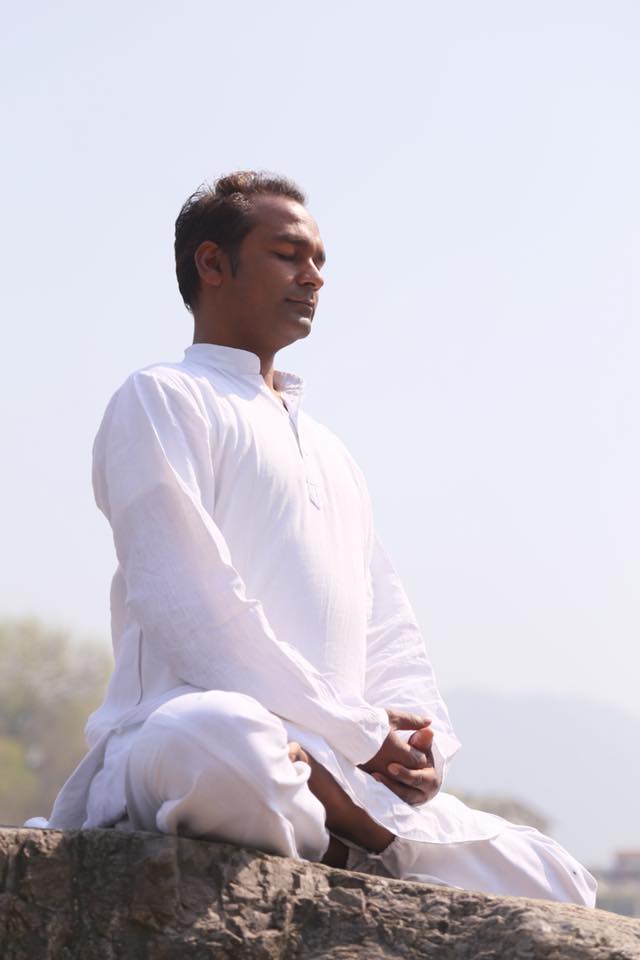 Sunil Sharma: So, actually, a lot of people come and I teach in teachers’ training programs all over the world, and I have been trained in psychology, I did my counseling and matters in psychology. Somehow people come and ask me about, “I am feeling this and this kind of issue, how to deal with that?” And I was teaching in China and many other countries, and in Rishikesh, in teacher’s trainings. And a number of people came - when we practice yoga, all those things become quite important, because you are spending lots of time with yourself. And when you spend a lot of time with yourself, then you see, what’s going on in my life? So, what is not taken into consideration, will come up. And you can’t stop that.
Sunil Sharma: So, actually, a lot of people come and I teach in teachers’ training programs all over the world, and I have been trained in psychology, I did my counseling and matters in psychology. Somehow people come and ask me about, “I am feeling this and this kind of issue, how to deal with that?” And I was teaching in China and many other countries, and in Rishikesh, in teacher’s trainings. And a number of people came - when we practice yoga, all those things become quite important, because you are spending lots of time with yourself. And when you spend a lot of time with yourself, then you see, what’s going on in my life? So, what is not taken into consideration, will come up. And you can’t stop that.
So in that people are really ready - that I really want to get rid of this tension, this anxiety, this fear, a number of issues. And they come to me. And since I had some background in psychology, I did try how much I understood, and then I saw that it works, but it really does not work well, because I was giving lectures, I was talking, I was doing this talking counselling, and I found: oh, it is not working, because I’m talking to the person and I’m talking to the story of this person. I’m not reaching to the person. So if I get into the story, then there is no end. The stories continue, and this person will come “Ok, now this is an issue, what should I do? With this issue what should I do?” And I have ten people and then my life is (overwhelmed). And they are not getting anything, cause every time they ask me, what to do? What to do? And I do not understand what exactly to do in their lives. Because their life is very unique, my life is different. So how can I answer that? So then somehow this process began: “OK, if we can reach to the core of the issue, maybe something will happen”. So, the only way to reach is to go inside.
So, then this understanding came, if you are relaxed, then what is there, you will see it. And I teach yoga nidra. So, through yoga nidra many people went into the relaxation, and suddenly they found: “Oh, I see this! This is the thing I am scared of!”
So then I started guiding them slowly, and then I started putting my understanding in it in a few years, and then people were still coming. And before they were coming and they were still getting some benefit, but after I changed this idea and I started working more: ”Ok, no stories. Get inside, relax deeply, and whatever is happening - face it.” And if you face the reality, what is happening? The tension goes away.
The problem with us is that we are not facing, we escape, and with this escape, we never reach to the core of the problem. So, when we can rest, with that rest things will come. If I can really be with this in totality, it’s released. And that is released in the form of energy in the body. So, body feels relaxed, mind feels relaxed, then this person can make decisions for himself.
So, this is how it is. It’s still evolving - I am learning with people, I’m seeing different kinds of issues coming, but there is a pattern which I have seen, like loneliness, anxieties, fear, depression, insomnia. These are very common things that most people have, those who come to me.
TopYogis: So what does this therapy include? Does it include everything from yoga?
Sunil Sharma: It’s Yoganga, so depending on the person. Sometimes we need movement, asanas, and basically all, the combined effect is required. But since people have less time, I have to condense it somehow. So mainly I am using relaxation and breathing. So though breathing we can actually go inside and explore something there. Then things come out. Which is not the story.
TopYogis: So for someone who is a typical person nowadays and would come to you and say “I have only fifteen minutes a day, what would you recommend me to do daily?”
Sunil Sharma: First of all, I would tell this person I can’t help you, sorry. Because if you don’t have time for yourself, then why would you come?
TopYogis: How much time does one require?
Sunil Sharma: Definitely, we need to have this time frequently. Not like “OK, I only have fifteen minutes”. That’s not the way. We need to have many. Even if you have one minute, and those one minutes are spaced, and there are many one-minute spaces in a day, so you can have twenty-thirty spaces of one minute - thirty minutes. But yes, then one minute will work when you have twenty-thirty minutes to sit with. So that is separate.
So, at least when we practice, especially when I suggest some relaxation or pranayama practices, some kind of movements, then thirty to forty-five minutes are required. Because in fifteen minutes, when you sit, fifteen minutes are required to settle down, and you’re already off.
It’s not about what we do that works, but what we do after that, when we leave the space - that’s the real space where something is happening.
So people think: “If I do this, something will happen.” It’s a totally wrong concept. Even practice of yoga. Lots of people practice yoga for one hour and at the end roll the mat - and slip away. Like at the end of the class, what we did? I just said nothing, I told you: “rest”. That’s the real time where something will happen. Because what you have done in this one hour needs to be processed, needs to sink into your psyche, into your heart, into your body.
And this time, when we are not doing anything, there is a possibility of silence. And in the silence, everything will come. If there is silence, there is insight. If there is silence, then there is a flash of knowledge, wisdom, understanding. Decisions that are taken with too much of thinking, they end up always in a wrong direction. Decisions that are taken with calm, in silent period of time, that’s much better.
Thirty to forty-five minutes are required, in which what you do is not really so important, but important thing is that much time you are with yourself. So, depending on your inclination, you can do different things. Those who are body-oriented, they can do some kind of asana practice, it’s also the same thing. If you are more interested in breathing practices, which goes even much deeper, do pranayama and some deep breathing even, nothing special. Just deep inhale slowly and exhale completely. You do it for fifteen minutes - it’s a very powerful thing. But after fifteen minutes, then you rest, so that this change can be settled inside. You can sit and meditate, you can lie down and watch your body, what’s happening with it. Observe it. You can have your own way. You can go to Ganga and sit for thirty minutes, forty five minutes. You can go and sit on the top of the mountain, just look into the open space. Look into the sunrise, look into the sunset.
What is to be offered - so free, open, because if we bind ourselves into this way, then that becomes a conditioning, and that’s useless again. Why we do it? So that we can free ourselves. When we bind ourselves, then why we are doing it? So everything is contradictory, and very simple.
TopYogis: Yes, very simple, and still hard because there is no one step, second step.
Sunil Sharma: There are no steps. That’s also wrong understanding. It’s in a circle. When in the circle, there is nothing up and down, it’s moving constantly.
It’s not only attitude - you have to include your body also. Not body only. Think about your emotions also.
Life is composite. Total. It has a gross physical body: we have to think about exercise, we have to eat, we have to sleep in time. It has emotions also. So, interaction with the world, how the world is influencing your emotions and how you are influencing the people around you with your emotions. Thoughts are there. They come and then they are influencing you and the others.
We are trained to see ourselves in parts. And that’s the difficult thing. We need time each day to be in totality. And how we do it - it depends on you, how you really connect to that. How you can be. So search your own also.
There are set methods so that with the help of that you can find your own. Otherwise, why Buddha has to go and work so hard - because everything was available to him. And why we are working so hard, what Buddha did - it is available to us. Why can’t we use it immediately? Because this is a personal journey. So nobody can do anything in it for us.
TopYogis: Sunil Ji, do you have your own practice, daily?
Sunil Sharma: Yes, and in this practice the same thing - I do not have a really structured system, not that kind of thing. I do not do it now, I used to do it a lot, because I’m somehow into the world now, and it’s taking a lot of time. But I do have those spaces where I am maybe doing some relaxation, or pranayam, or some kind of asanas, and sometimes doing nothing and looking, staring at the wall. And yes, somehow I’m in the transition phase, I spent a lot of time with myself earlier, now I’m spending a lot of time with the world outside of me, a lot of work, a lot of people are coming. My family is there.
But I do have spaces like I will leave and I will go and I will not work for some time. I have this frequently.
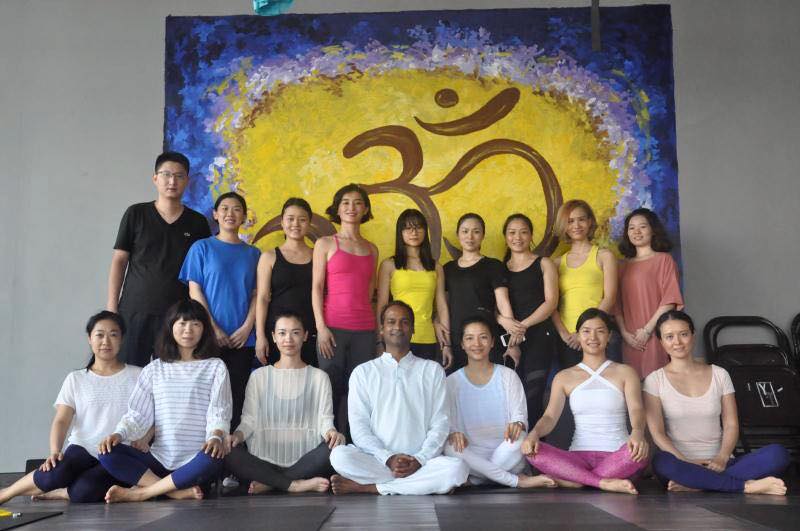
TopYogis: So how would you describe a purpose of yogic practice?
Sunil Sharma: First of all, when we say yoga, we need to expand the awareness where we are not putting ourselves into one box. And most people have a set box. The word yoga comes, and they are in that box. I have to break it.
Yoga is the process of internalizing the awareness. Whichever the method is given in yoga, it is internalizing the awareness. And the moment awareness is internalized, we connect the body and consciousness together, and all the conditionings of the society and of the mind are taken out of it. And that’s the whole purpose.
Like, even today we have experienced something. You have done one hour practice with me, this is what I try to do. Use the body, use the movement, what was the purpose - internalizing the awareness. From the outside world, we went in. And then, the body and consciousness are coming together. All thought processes - we took it away. So, even Patanjali has defined yoga as “chitta vritti nirodha”, means taking off all the modifications, and what is left is - “drastr svarupe vasthanam” - that you are established in your own true self.
So when we are able to take away that which is in between me and myself, we are already in yoga. We don’t have to go somewhere. The moment we internalize this awareness, this process begins. That we take away this conditioning, and thought processes.
TopYogis: What is your advice to people who come to Rishikesh and get overwhelmed with the big choice of yoga here. What should they do?
Sunil Sharma: My advice is that how people are living their lives in their country - there’s a lot of pressure. They’re running from one thing to another. And basically, there’s no time left for the people to be with themselves. So somehow, a lot of people thought “Ok, let’s go to such place as Rishikesh, a retreat”.
Retreat means what? Retreat yourself. Going somewhere and be in some place where you are able to just drop everything that is happening in your life, and the speed and everything, and then you sink into your reality. Your true inner self.
So, coming to Rishikesh, the first thing was river Ganga, mother Ganga. Because she is the mother, unconditional love is flowing through her. Being in her vicinity stops a number of problems. Just that. It’s not a belief, experience it. You see with the water, you learn a number of things. It’s not ordinary, it’s a very sacred water. There’s a prayer to it, there’s energy in it.
Then, there was a thing like these temples and this environment, living with the river, slow life, and practice of yoga. So practicing yoga for 2-3 hours in the morning, 1-2 hours in the evening, depending on your inclination, your interest, your understanding. You choose teachers.
Once you have found your teacher, people were not changing them every day. They were not testing teachers, but they were practicing for themselves. Now, what is happening? Most of the people will come to test teachers. If you’re not with someone for a prolonged period of time, you don’t know what effect his yoga brings. So sink. But definitely, before that, we need to choose the teacher who matches to your need. But then you stay with him. A number of activities were there - even attending aarti, sitting by the Ganga, practicing morning and evening. Then you see community kind of feeling, a lot of people from all over the world come, they sit and eat and talk to each other, they exchange their ideas. A number of things happen to their lives, life changes from here, because they are given a broad perspective on the life, they can see the world globally here. And then you take the experience of this one month, and then you make your life better back home. And when you feel lack of energy, feel that you’ve discharged yourself, come again. So people were coming like this. And they should come like this. So the real thing is that we stay with ourselves, and live our lives better. Rishikesh is a kind of retreat place, which somehow now with the crowd and the traffic it’s not really a retreat, but still, we can maintain that with our own intention of practice. Going to different places, visiting a lot of powerful places like Kunjapuri, Nilkanth temple, Vasisht cave, Gangotri. These are great energy places. There is a number of things one can do. Not only teachers training.
TopYogis: So your advice would be not to come for teacher’s training?
No, see, once you reach that level where you really want to do that, then learn it. Not when you break up with your boyfriend and lost your job, and you decide: “I want to do teacher’s training and I want to teach yoga”. You need a long time for sinking. Take a few years, three years, five years, and then start teaching. Teaching will happen then. People will automatically come to you.
TopYogis: Even without Yoga Alliance certification.
Sunil Sharma: I don’t have (laughs).
TopYogis: Thank you very much!
You can contact Sunil Sharma and see where he is teaching at his TopYogis page. If you have practiced with him you can share your experience there.
Find hatha yoga teachers in Rishikesh
Find hatha yoga instructors around the world.
Find yoga teachers in Rishikesh (all styles)
Find yoga schools in Rishikesh.
If you're a yoga teacher, create your profile page on TopYogis. Here's what it can give you.

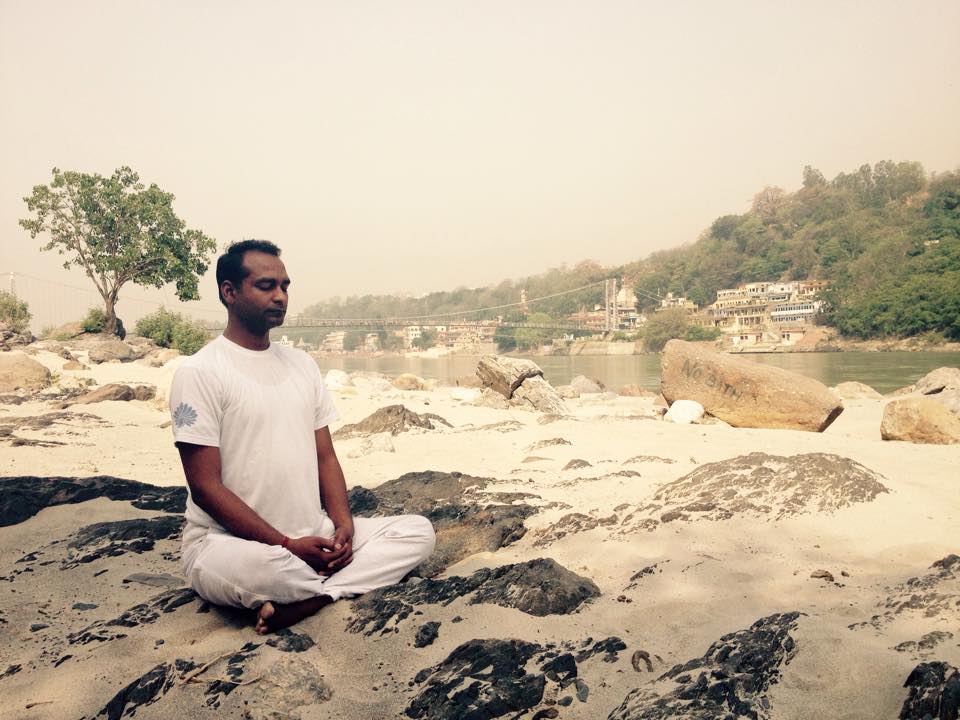
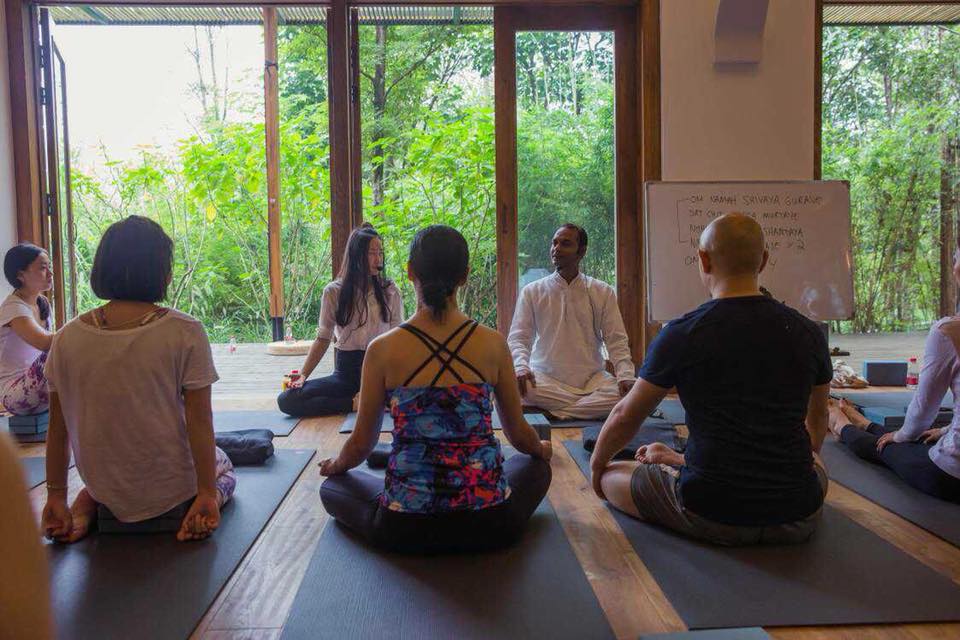

easerpops
http://iverstromectol.com/ - driponin online Table 11 Mean Endpoint and Change from Baseline for the EF Domain of the IIEF in the General ED Population in Five Primary Trials Outside the US